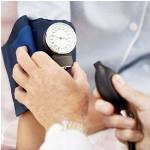11 Feb Hospital, heal thyself

Imagine reducing by nearly half the number of people categorized as high risk for chronic disease (e.g. diabetes, cancer, cardiac disease, stroke, arthritis) through wellness coaching. Now imagine that you are an employer covering the lives of more than 10,000 employees and their dependents where high risk health factors are the biggest drivers of your health costs.
One such employer is Eastern Maine Healthcare Systems (EMHS) where they are “walking-the-walk” in improving the health of their own employees and dependents, a strategy they are urging other employers to adopt. Health care costs are the second highest item for nearly all employers so moving the numbers through wellness programs drives bottom line results.
Lowering their own costs of health care is just one of many challenges facing Maine hospitals though it’s a good place to start for those who are professional care givers. According to Michelle Hood, CEO of EMHS and Eileen Skinner, CEO of Mercy Health Systems (now part of EMHS) the confluence of economic, demographic and political forces is a massive and unresolved challenge though they are making progress. The two executives recently addressed members of the Portland Regional Chamber at their Eggs & Issues forum. Their complete presentation is available online.
EMHS is among the nation’s leaders in changing the efficient and effective delivery of care but the work ahead is daunting. Maine’s rapidly aging population, changes in Medicare and Medicaid reimbursement, a cap on charitable deductions and fewer high-margin hospital admissions are creating a potential $243 million annual shortfall in funding for Maine’s hospitals. From 1991 through 2009, Maine’s average annual growth in per capita personal health care was 7.4% while New Hampshire’s was 7.6% according to the Centers for Medicare and Medicaid Services. The national average for the same period was 6.5%. Also, in 2009, Maine was among the highest for per capita spending.
EMHS and others are putting into practice services that prevent chronic diseases and the high-margin admissions that feed their bottom line. The irony of creating healthier people to your own detriment is not hard to miss. Nevertheless, the work of retooling delivery systems must continue and evolve to produce even better outcomes at a lower cost.
Measures of excellence for EMHS include reducing readmissions, lowering Medicare costs for in-hospital patients and usage of generic prescriptions when proven effective. The foundation of the metrics, however, appears to be educating their employees and “customers” to be better health care consumers. Of the 92% of their employees who participated in health coaching, 67% achieved between 75% and 100% of their three-month goals. EMHS estimates that reducing just one of five basic health risks equates to $150 to $1,000 during the course of a year. Employees who participated in coaching lowered their overall risk factors, use of emergency departments and premium costs.
All of us in Maine and New Hampshire have a lot at stake as health care absorbs more and more of our gross state product – money that could otherwise be put to use in creating personal savings, new jobs and capital investments. The cost of health care is approximately 17% of the nation’s gross domestic product, the value of all goods and services produced. Using that percentage for Maine and New Hampshire, it means we are spending $8.7 billion in Maine and $10.8 billion in New Hampshire for health care. A one percent reduction in these expenditures would redirect $100 million to other uses in our states.
EMHS and Mercy are showing demonstrated leadership and, in Maine, may soon be bringing those practices to your place of work.



